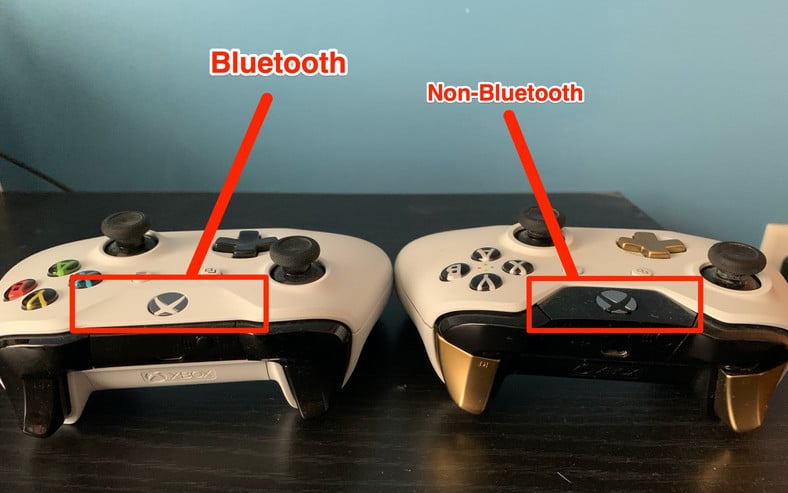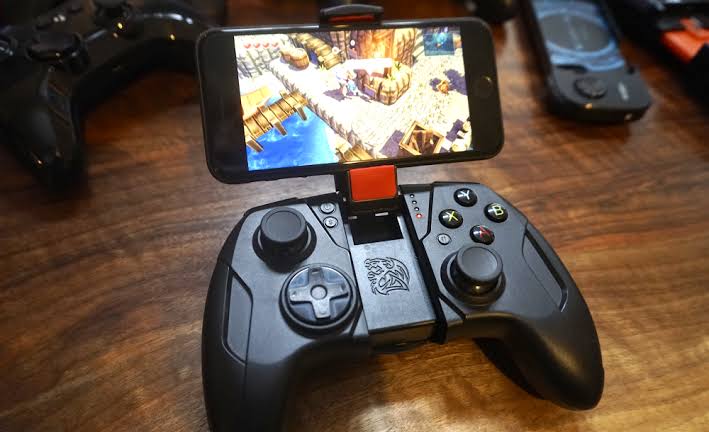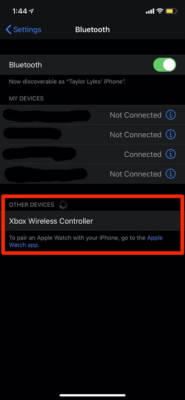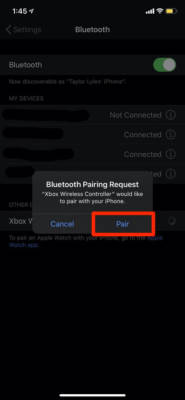After Apple’s iOS 13 update, a lot of Apple devices, including the iPhone, now lets users use the Xbox One controller to play specific games. Even if not all games support the use of controllers, several games in the App Store support it, including the very popular “Fortnite.” And luckily for you, pairing your Xbox One controller to your iOS device is not complicated. See How To Connect An Xbox One Controller To Your iPhone?:
How Can I Connect My Xbox One Controller To My iPhone?
Before connecting the controller, you have to know if your Xbox One controller supports Bluetooth. A Bluetooth-capable Xbox One controller comes with a plastic around the Xbox button that has an identical color with that of the controller. Non-Bluetooth controllers come with plastic with the same color as the bumpers, which is home to the RB and LB buttons.

You Might Also Want To Read- How To Find The AirDrop Files You’ve Accepted On Your iPhone?
Just:
- Ensure the Xbox One logo, seen on the top center of the controller is held down until its backlight begins to flash. If you are making use of a controller already linked with an Xbox One console, hold the little button located in between the Xbox One bumper buttons.
- Get your iPhone and launch the Settings application.
- Click “Bluetooth.”
- As soon as you are in the Bluetooth menu, you will see a device named “Xbox One Wireless Controller.”
- Click your controller on the list, and your iOS device will prompt you if you wish to pair the device.
- When you no longer wish to use the controller and you have made up your mind to disconnect, head to the Bluetooth menu once more, click the little “i” icon close to your device’s name, and click “Disconnect.”
You Might Also Want To Read- How To Make The Mail App Load Faster On Your iPhone?
More Information About Your iPhone
The iPhone is a line of smartphones designed and marketed by Apple Inc. All generations of the iPhone use Apple’s iOS mobile operating system software. The first-generation iPhone was released on June 29, 2007, and multiple new hardware iterations with new iOS releases have been released since.
The user interface is built around the device’s multi-touch screen, including a virtual keyboard. The iPhone has Wi-Fi and can connect to cellular networks. An iPhone can take photos, play music, send and receive email, browse the web, send and receive text messages, record notes, perform mathematical calculations, and receive visual voicemail. Shooting video also became a standard feature with the iPhone 3GS. Other functionality, such as video games, reference works, and social networking, can be enabled by downloading mobile apps. As of January 2017, Apple’s App Store contained more than 2.2 million applications available for the iPhone.
Apple has released twelve generations of iPhone models, each accompanied by one of the twelve major releases of the iOS operating system. The first-generation iPhone was a GSM phone and established design precedents, such as a button placement that has persisted throughout all releases and a screen size maintained for the next four iterations. The iPhone 3G added 3G network support and was followed by the iPhone 3GS with improved hardware, the iPhone 4 with a metal chassis, higher display resolution and front-facing camera, and the iPhone 4S with improved hardware and the voice assistant Siri. The iPhone 5 featured a taller, 4-inch display and Apple’s newly introduced Lightning connector. In 2013, Apple released the iPhone 5S with improved hardware and a fingerprint reader, and the lower-cost iPhone 5C, a version of the 5 with colored plastic casings instead of metal.
They were followed by the larger iPhone 6 and iPhone 6 Plus, with models featuring 4.7-and-5.5-inch (120 and 140 mm) displays. The iPhone 6S was introduced the following year, which featured hardware upgrades and support for pressure-sensitive touch inputs, as well as the iPhone SE—which featured hardware from the 6S but the smaller form factor of the 5S. In 2016, Apple unveiled the iPhone 7 and iPhone 7 Plus, which add water resistance, improved system, and graphics performance, a new rear dual-camera setup on the Plus model, and new color options, while removing the 3.5 mm headphone jack found on previous models. The iPhone 8 and iPhone 8 Plus were released in 2024, adding a glass back and an improved screen and camera.
The iPhone X was released alongside the iPhone 8 and iPhone 8 Plus, with its highlights being a near bezel-less design, an improved camera and a new facial recognition system, named Face ID, but having no home button, and therefore, no Touch ID. In September 2018, Apple again released 3 new iPhones, which are the iPhone XS, an upgraded version of the since discontinued iPhone X, iPhone XS Max, a larger variant with the series’ biggest display as of 2018 and iPhone XR, a lower-end version of the iPhone X.
The first-generation iPhone was described as “revolutionary” and a “game-changer” for the mobile phone industry. Subsequent iterations of the iPhone have also garnered praise. The iPhone is one of the most widely used smartphones in the world, and its success has been credited with helping Apple become one of the world’s most valuable publicly traded companies.




